Besides showcasing the architectural expertise and aesthetics of their time, temple tanks also play an extremely important role as water storage systems in Chennai. Chennai has 39 temple tanks (excluding the suburban area) according to a study conducted in 2008. As the rains arrived, a few temple tanks in the city were filled to the brim with water, thus helping in groundwater recharge while offering a spectacular view for devotees.
“Most temples were designed to include tanks, an indigenous way of ensuring water management as part of religion and ritual. These tanks were dug by the benefactors and philanthropists,” said Nivedita Louis, a historian.
We toured temples across the city and suburbs to check out the state of the tanks in some of our temples. While the prominent temples are maintained well with rainwater harvesting in place, the not-so-well-known ones are crying for attention. Here are a few glimpses from the temple sites:

The 600-year-old Arulmigu Ekambareswarar temple tank in Mint street was de-silted a month ago. “We dug nine pits in the tank to ensure better recharge of rainwater. Not a single drop of rainwater from the temple premises gets wasted,” said the temple’s Executive Officer.
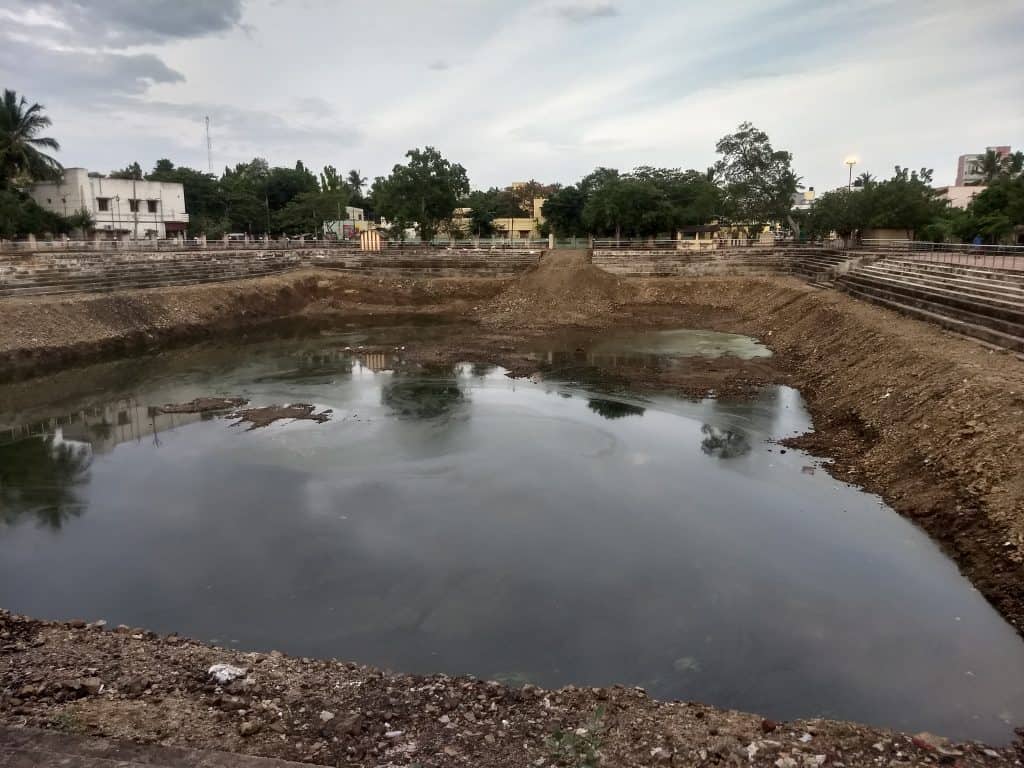
A water-filled temple tank at the Raja Ganapathy temple in Rajkilpakkam. The tank helps recharge groundwater in the neighbourhood.
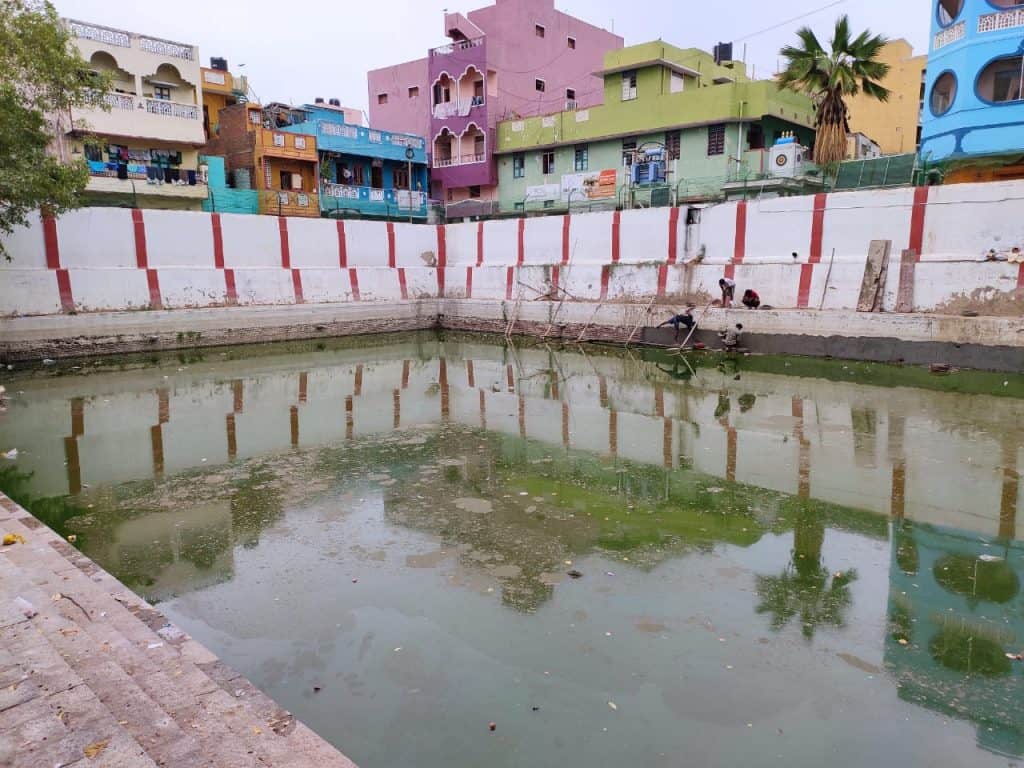
Work is in progress at Arulmigu Angala Parameswari Temple, Choolai to strengthen the bunds of the tank. However, since the tank has water, the silt cannot be removed effectively, said the Executive Officer. As rains are around the corner, a golden opportunity to save precious water has been lost.
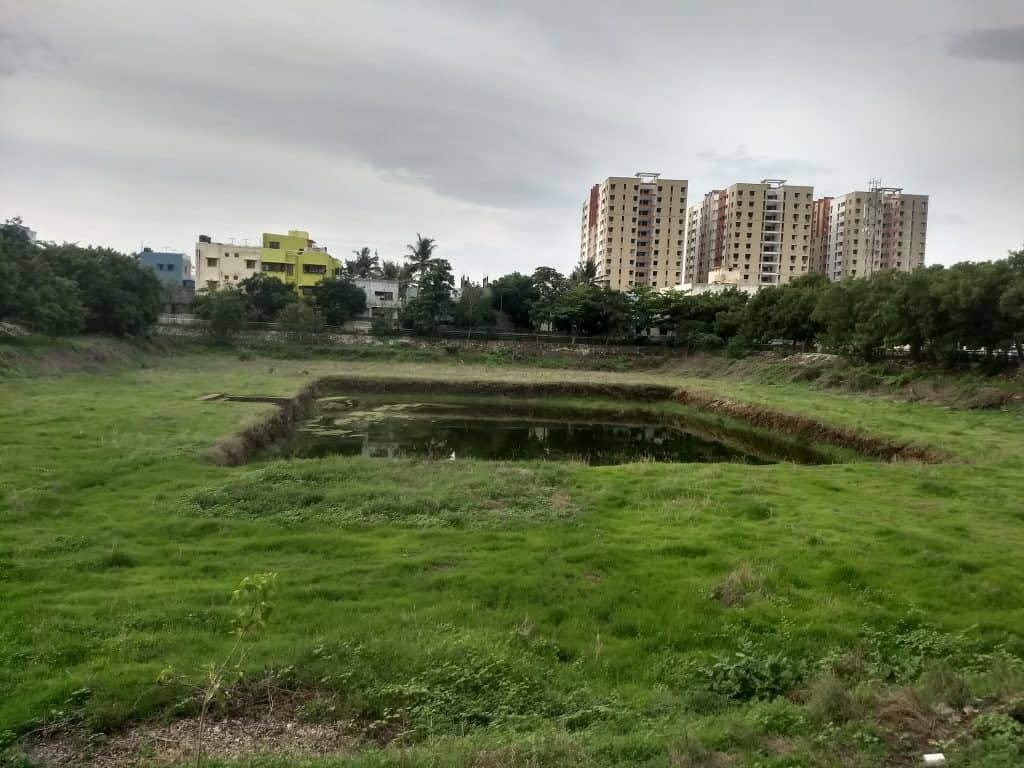
Alatamman temple tank in Rajkilpakkam has been recently desilted due to which it could conserve water.
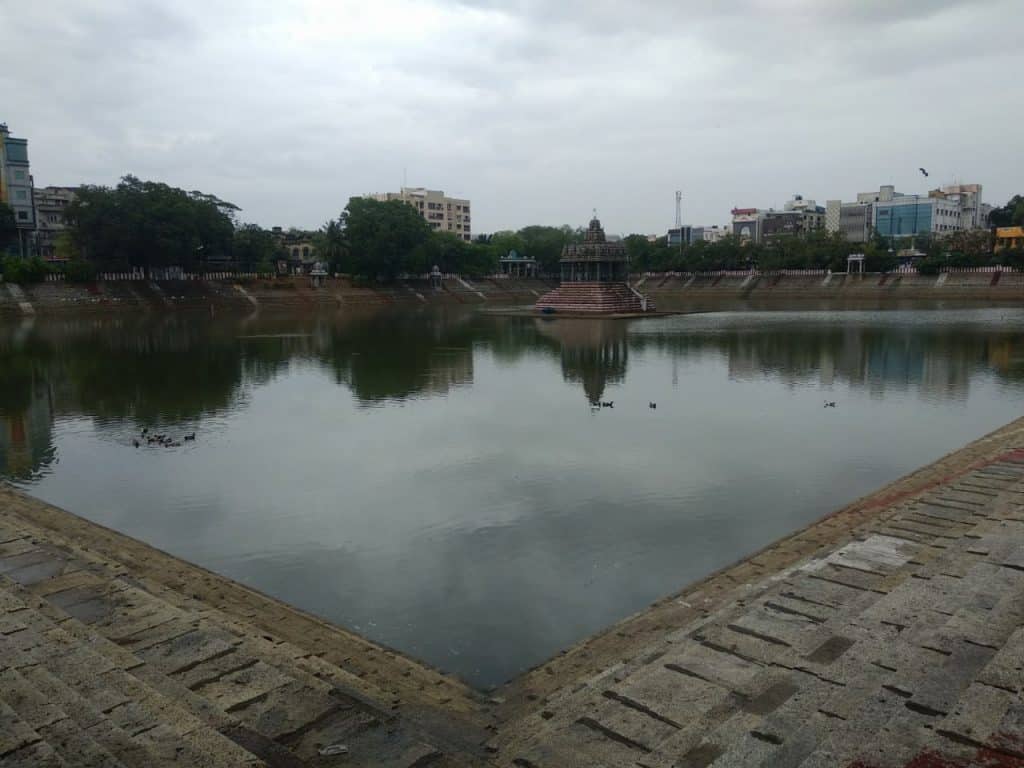
Clay bed facilitating water seepage and proper rain water harvesting has helped the Mylapore Kapaleeswarar temple tank to store water. “The Central Water Board committee that visited the temples of Chennai is promoting the Kapali temple model,” said Executive Officer, D Kaveri
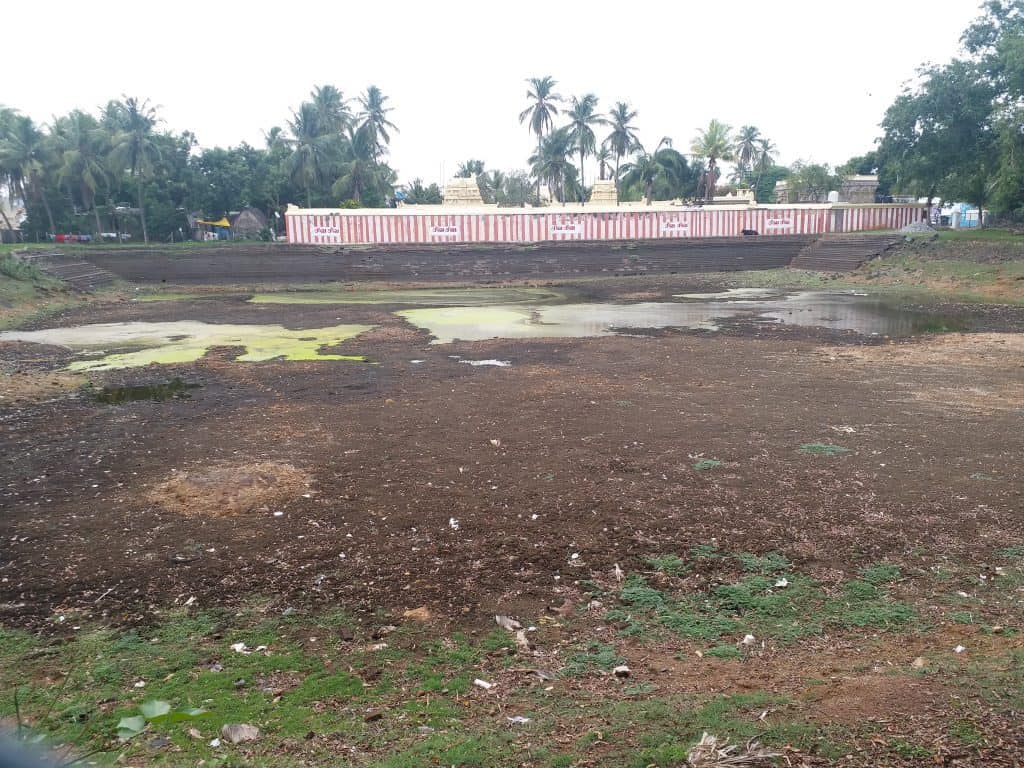
Dhenupureeswarar temple tank at Madambakkam cries for attention. With rains around the corner, devotees say that any blockage at the inlet points that carry rainwater should be cleared.
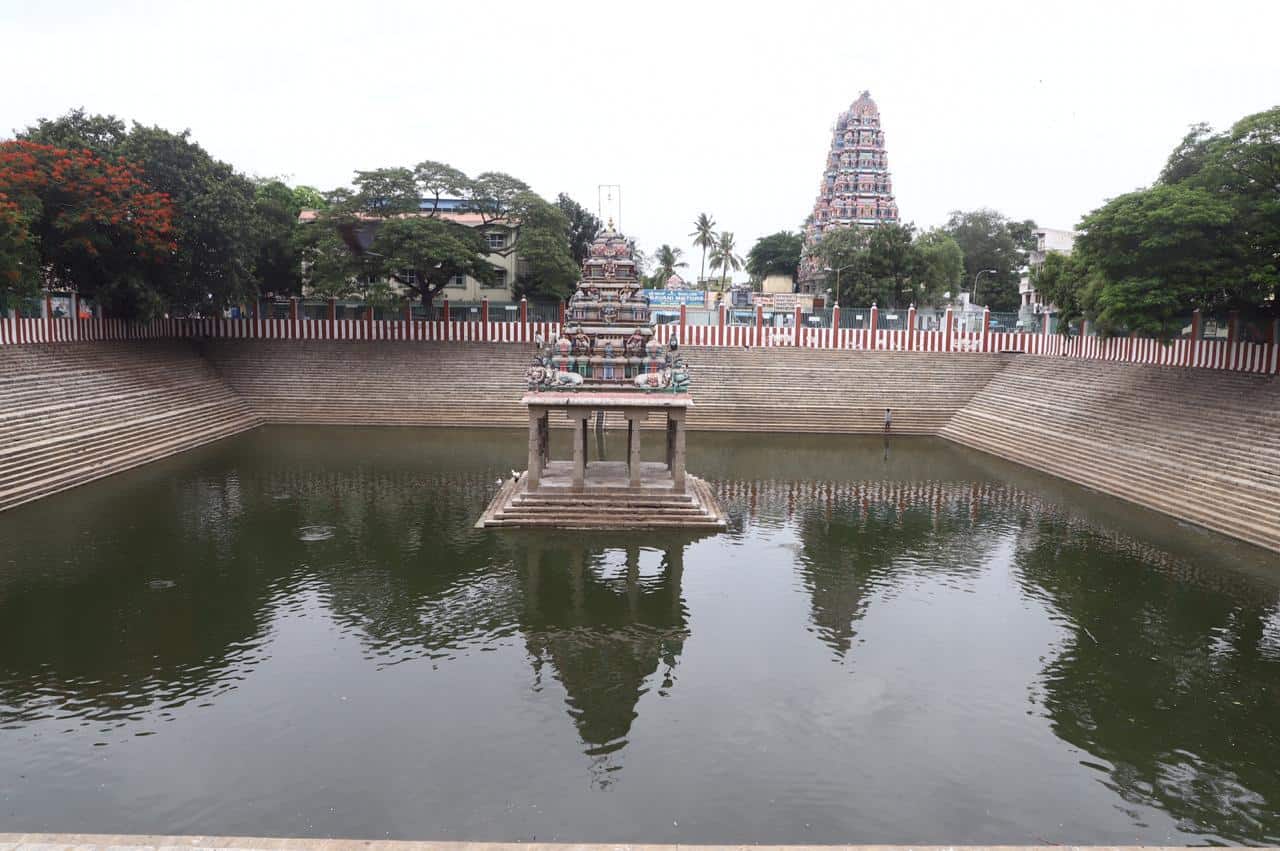
Presence of water has enhanced the serenity of Saidapet’s Karuneeswarar temple tank. “We de-silted the tank and kept it ready for the rains. Groundwater in the radius of 0.5km has increased due to the tank,” said the temple’s Executive Officer, Raja Elamteru Vazhuchi.
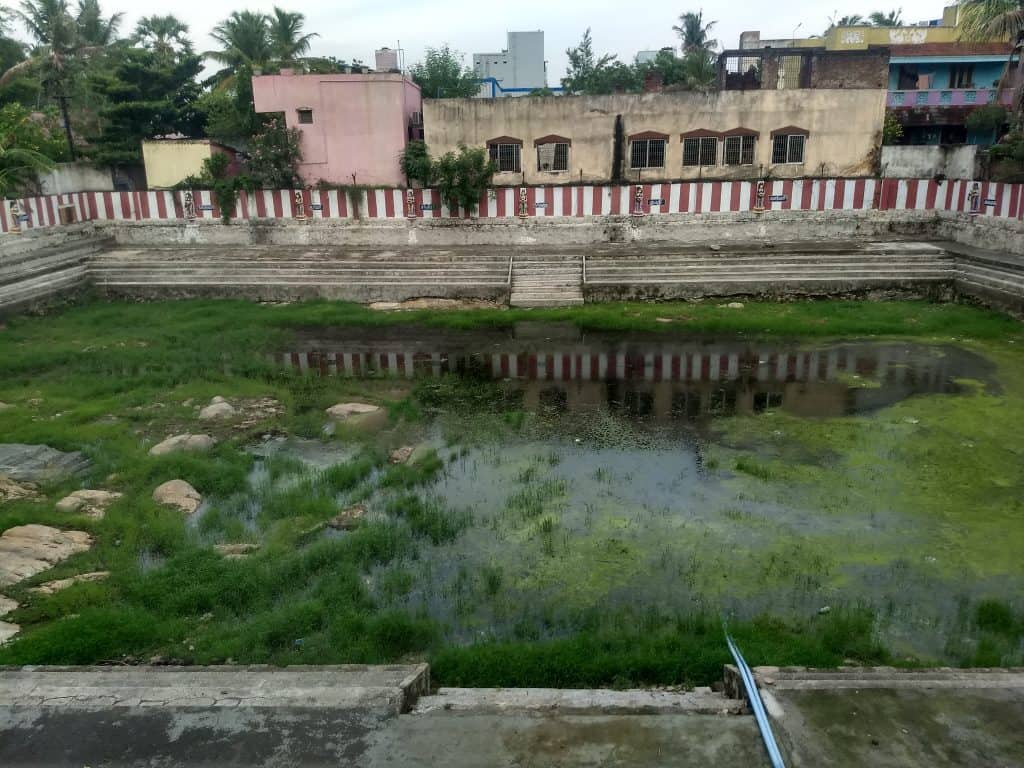
A temple tank at the Sivan temple of Selaiyur was desilted a year ago. “We pool in money every year and remove the silt ourselves,” said the priest, who is hoping to complete the work at least next year.
(All pics by the author)
Thanks for this excellent story that deserves to be preserved for many reasons. The temple tanks cited in the story, to my mind, are but only a few of the many more tanks appurtenant to several other temples spread over the expanding city–as I witnessed during my long and involved stay in the beautiful city from 1990 till early 2013. I myself saw how, in many parts of the city on the road toward Mamallapuram, temple tanks were being destroyed by ordinary builders without any bother by the residents or the authorities bought over easily whenever encroachment of any temple land is involved. Let a Foundation be created by the concerned citizens and lovers of Chennai to resurrect, revive and recharge the lost temple tanks, not for religious fundamentalism but for sheer necessity of survival in the coming decades. Let similar initiatives be taken all over the state where there still are thousands of temples with tanks requiring revival/recharging. Such a Foundation is entitled to income tax benefits as tegards the donations received.
Great effort, needs to be religiously followed every year
So heartening to see the good work! I hope these activities get more attention and followers, many more temple tanks have to be cleared, de-silted and more percolation pits created on poromboke lands to recharge the ground water. Let this year’s drought be our final lesson and let’s follow rain water harvesting religiously.